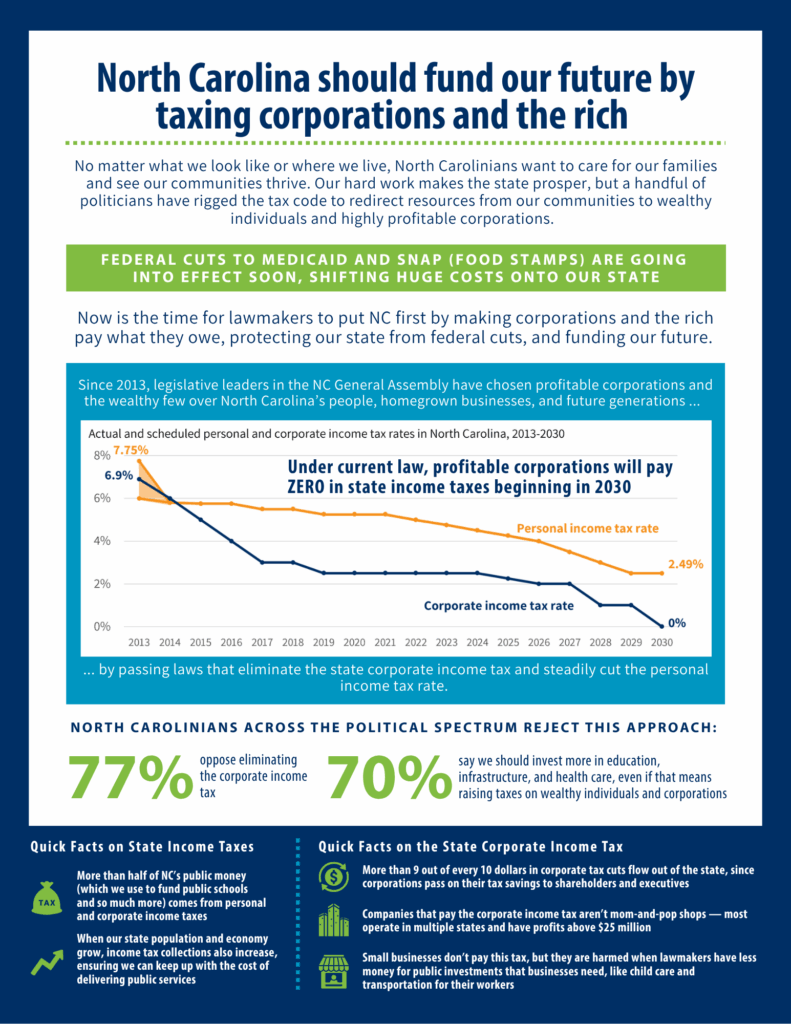
National Census data show persistent inequities; NC data to be released Thursday
Sept. 9, 2024 — Today, the U.S. Census Bureau released national-level poverty, income, and health coverage data for 2024 from the Current Population Survey Annual Social and Economic Supplement (CPS ASEC). On Thursday, Sept. 11, the Bureau will release state- and local-level data from the American Community Survey (ACS).
NC Budget & Tax Center (BTC) staff will release initial analysis of North Carolina’s ACS data on Thursday and will be available for interviews and background briefings. We are available to help journalists in interpreting:
- health insurance coverage trends
- poverty rates
- long-term and equity trends.
We have also attached an FAQ document below to help explain the key differences between the CPS and ACS and aid in analysis.
Key income and poverty findings from today’s CPS data
The income and official poverty measures from the CPS released today show a relatively strong economy in 2024, although stark inequities persist — and public policy has a key role to play in addressing these inequities.
- National median household income kept up with inflation — the CPS shows it was $83,730, statistically unchanged from 2023 after adjusting for inflation.
- But the economy was not working for everyone: median Black household income declined by more than 3 percent.
- The Official Poverty Measure declined overall, falling 0.4 percentage points to 10.6 percent, but did not change for Black or American Indian households.
- Along with Latine households, Black and American Indian households continue to be much more likely to live in poverty than white households.
“North Carolinians deserve an economy that works for everyone. These data show that progress is possible through good public policy — millions have gained health coverage and been lifted above the poverty line over the past 25 years,” said Logan Rockefeller Harris, Director of Research at the NC Budget & Tax Center. “But it also shows us who is consistently left out: Black, Latine, and Indigenous households continue to face higher poverty rates, lower incomes, and higher uninsured rates than white households.”
“Instead of building on what works, the harmful Republican megabill threatens to undo that progress by cutting food assistance and health coverage, which will disproportionately harm communities of color. That is a policy choice — and one that will deepen inequities that are already far too wide,” said Harris.
Health coverage
The rate of people without health insurance held steady at 8 percent (although the ACS data released later this week may show an increase in uninsured people because the CPS only considers people uninsured if they had no coverage for the entire year).
- While Medicaid coverage dropped substantially due to the end of pandemic-related provisions, coverage from the Affordable Care Act marketplace rose significantly to help make up for Medicaid losses.
- The harmful Republican megabill passed this summer is predicted to lead to huge increases in people without health insurance in the future, due to Medicaid cuts and the failure to extend enhanced premium tax credits that make ACA marketplace coverage far more affordable.
- In North Carolina, an estimated 515,000 people are at risk of losing health coverage.
- Thursday’s ACS data will provide a baseline for tracking health coverage losses in future years.
Supplemental Poverty Measure and policy impact
The CPS also releases a Supplemental Poverty Measure (SPM) that includes the impacts of public programs. The SPM shows the powerful effect of government policy at lifting families out of poverty — and how much damage will be done by the Republican megabill.
- Nationally, the Child Tax Credit lifted 4.1 million people out of poverty in 2024. The megabill eliminated eligibility for about 2 million children across the U.S. who don’t have at least one parent with a Social Security number.
- SNAP food benefits lifted 3.6 million people out of poverty, but the megabill will cause about 4 million people to lose a significant amount of their food assistance.
- In North Carolina specifically, about 143,000 people are at risk of losing food assistance.
These numbers are more than statistics – they show how policy choices shape the lives of North Carolinians. BTC will continue to analyze the upcoming ACS data and provide context on what these numbers mean for North Carolina’s families and communities. Reporters are encouraged to reach out with questions or to schedule interviews with our experts.
ABOUT NC BUDGET & TAX CENTER: The NC Budget & Tax Center is a non-partisan, nonprofit organization that documents fiscal and economic conditions in communities to support the work of people, organizations, and government to advance solutions to poverty and pursue racial equity.
Contact: Logan Rockefeller Harris, Director of Research at the NC Budget & Tax Center, [email protected]; or Mel Umbarger, Director of Communications, [email protected]
CPS Data and ACS Data Frequently Asked Questions
What are the primary differences between the CPS ASEC and ACS?
Both surveys are conducted by the U.S. Census Bureau and collect data on a variety of topics, including income, health insurance coverage, and demographic and social characteristics. The CPS ASEC is the official source of national poverty estimates and is the preferred data source for national income and poverty statistics. The CPS ASEC is collected annually.
The ACS is the preferred data source for states and other subnational areas. The ACS provides data not only at the national and state levels, but also for smaller geographies such as counties, cities, small towns, and rural areas. The ACS collects data continuously throughout the year. The ACS is the largest household survey in the U.S. and offers a comprehensive look at how people live in communities across the country.
What types of data are collected by these surveys?
The ASEC collects data on more than 50 sources of income during the previous calendar year. The ACS collects limited labor data, detailed demographics, housing (homeownership, rent, structure), detailed income and poverty data, and granular education data. It also tracks where people move.
What geographic levels does the ACS cover?
The ACS provides data for all communities down to the neighborhood (census tract) level. Available geographies include the nation, states, counties, cities, metropolitan areas, American Indian and Alaska Native areas, congressional districts, state legislative districts, and school districts.
How is ACS data used?
ACS data is relied upon for a wide range of uses by governments, nonprofits, researchers, journalists, and businesses. The survey’s detailed information on demographics, housing, education, income, and other key indicators helps inform policy decisions, allocate resources, and understand community needs. ACS data guides trillions of dollars in federal funding for education, health care, housing, transportation, and other vital services. ACS data helps state and local governments direct services and resources effectively and in emergency response planning.
How can media use ACS data?
Reporters can use ACS data to drill down to state, county, city, or neighborhood levels to show how a national trend (like rising rents, income inequality, or insurance coverage) is impacting your coverage area. The detailed demographic data can be used to expose inequities in income, education, housing, or internet access. Data can support investigations with hard numbers or provide additional evidence to support anecdotes and quotes.



